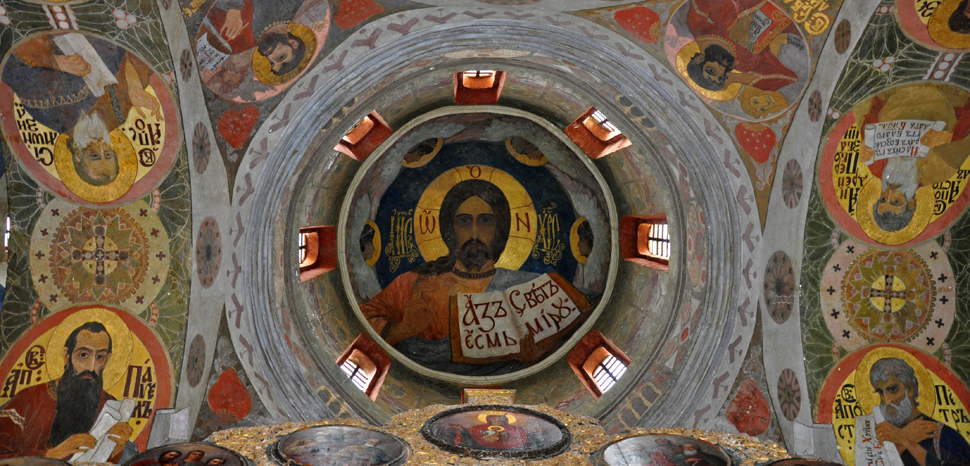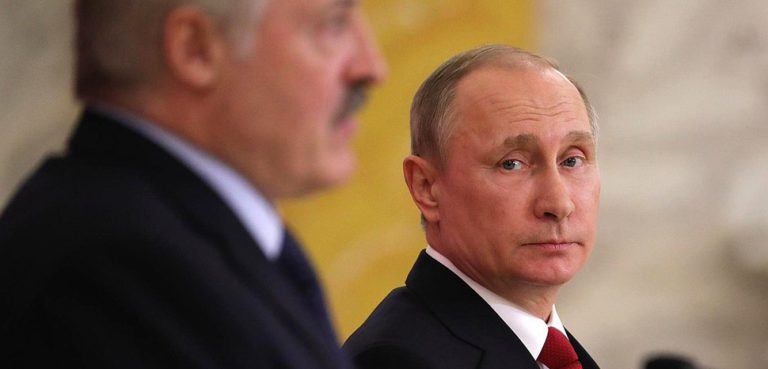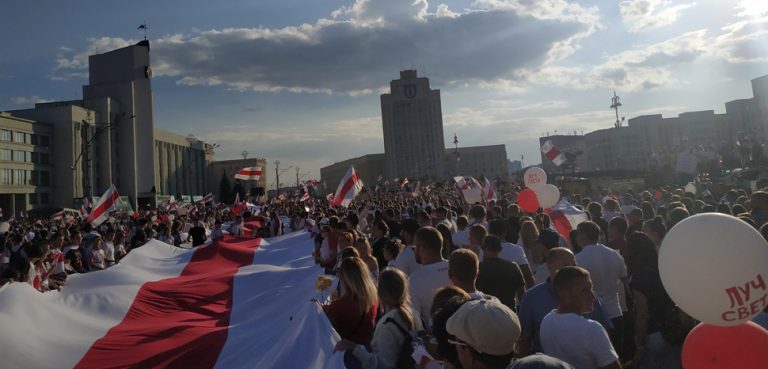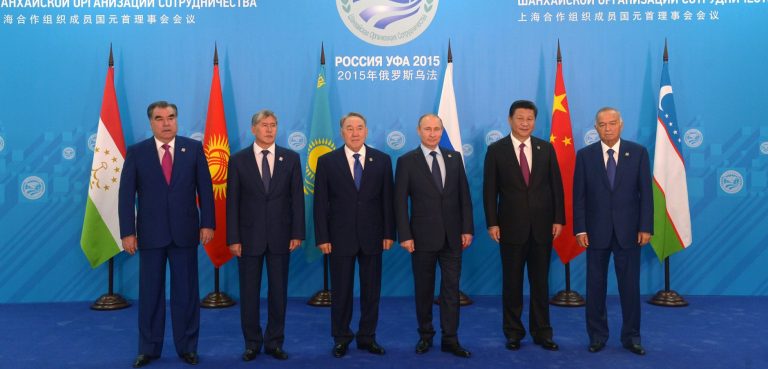On April 22, the Cabinet of Ministers of Ukraine extended the coronavirus quarantine until May 11. The decision was made due to the rapid spread of coronavirus throughout the country, despite quarantine measures that were introduced on March 11. To put things into perspective, on April 12 the number of confirmed COVID-19 cases in Ukraine was 3,316; on April 19 – 6,069; on April 30 – 10,406.
The Ministry of Health of Ukraine (MOH) attributed the sharp increase in COVID-19 cases to mass quarantine violations that occurred during Orthodox Easter on April 19, when nearly 130,000 Ukrainians went to churches to attend Easter services. The majority of the churches and monasteries that ended up attracting large numbers of believers belonged to the Ukrainian Orthodox Church of the Moscow Patriarchate (UOC-MP). On April 20, the police opened five criminal cases and issued five administrative protocols for quarantine violations by representatives of the UOC-MP during Easter celebrations.
Church and State
In Ukraine, religious institutions enjoy the highest level of trust. According to a 2018 opinion poll, more people trust the church (51%) than the government (11%), or the parliament (8%). Without the support of religious institutions, the government would not be able to contain the spread of the COVID-19 during Palm Sunday and Easter, events that were bound to attract thousands of believers to churches across the country.
The government managed to secure the support of the Orthodox Church of Ukraine, and the Ukrainian Greek Catholic Church. Both encouraged people to stay at home during quarantine and instructed churches under their respective jurisdictions to switch to online services till the end of April. The Ukrainian Orthodox Church of the Moscow Patriarchate stood out when it decided to remain open and continue to conduct public services during quarantine.
To understand why this situation occurred, it is important to take a closer look at the complex relationship between the government and various religious institutions in Ukraine.
Orthodox Christianity in Ukraine
Orthodox Christianity is the most widespread religion in Ukraine. According to a 2018 survey, 71.7% of Ukrainians consider themselves believers; the majority are Orthodox Christians (67.3%), followed by Greek Catholics (9.4%).
Until its independence in 1991, Ukraine didn’t have freedom of religion. In 1990, in the context of rising nationalistic sentiments and a drive for Ukrainian independence, the Russian Orthodox Church (ROC) decided to grant the Ukrainian Orthodox Church (UOC) self-governing status. The UOC would enjoy greater autonomy while remaining under the ROC’s jurisdiction. Two years later, a part of the clergy left the UOC and created the Ukrainian Orthodox Church of the Kyiv Patriarchate (UOC-KP). Russian Orthodox Church refused to recognize the UOC-KP and excommunicated the UOC-KP’s head Metropolitan Filaret.
The events of the 1990s created two major strands of the Orthodox Christianity in Ukraine: the Ukrainian Orthodox Church, also referred to as the Ukrainian Orthodox Church of the Moscow Patriarchate (UOC-MP), and the Ukrainian Orthodox Church of the Kyiv Patriarchate (UOC-KP). The former remained loyal to the ROC, the latter represented an independent Ukraine.
Ever since their creation, the two churches never ceased to compete for influence, believers, and financial resources. Both actively engaged in Ukrainian politics. Case in point – the 2004 presidential elections, when the UOC-MP encouraged people to vote for the Russian-backed candidate Viktor Yanukovych, while the UOC-KP supported the Orange Revolution.
The situation became even more complicated after Russia started its military aggression against Ukraine in 2014. Many Ukrainian politicians felt the need to limit the influence of the Russian Orthodox Church on Ukrainian believers. Gaining “spiritual independence” from Russia became a matter of national security.
The difficulty was that for years the UOC-MP, which remained under ROC’s jurisdiction, was the only canonical Orthodox Church in Ukraine. Things changed in 2018 when Ukrainian President Petro Poroshenko announced the creation of the Orthodox Church of Ukraine (OCU). The OCU absorbed the Ukrainian Orthodox Church of the Kyiv Patriarchate and became the first officially recognized, independent Orthodox Church in Ukraine.
This brief description of the history of the Orthodox Church in Ukraine should provide some context as to why the Ukrainian government was able to secure the support of the OCU with regards to quarantine, but failed to do so with the UOC-MP.
COVID-19 in the Monasteries of the Moscow Patriarchate
The first wave of confirmed COVID-19 cases began to appear in major monasteries days and, in some cases, weeks before Easter. Almost all churches and monasteries that turned into coronavirus hotspots were under the jurisdiction of the UOC-MP. Despite that, key figures of the Moscow Patriarchate, including the head of the UOC-MP Onufry, kept urging believers to attend religious services, downplaying the danger of COVID-19.
Major spikes in COVID-19 cases came after Palm Sunday on April 12 and the Orthodox Easter on April 19. Three UOC-MP’s monasteries grabbed public attention, as they refused to heed warnings from the authorities and continued to conduct public religious services throughout April.
They are as follows:
Kyiv Pechersk Lavra
Located in the heart of Kyiv, Kyiv Pechersk Lavra is a preeminent center of Orthodox Christianity in Eastern Europe. Following the introduction of the quarantine in March, the abbot of Kyiv Pechersk Lavra, Metropolitan of the UOC-MP Paul publicly denounced the government’s attempts to limit the number of religious services during upcoming celebrations, criticizing the authorities for “short-sightedness.” He continued to encourage believers to participate in collective prayer, inviting families with kids to attend the services.
The first four cases of coronavirus in the Lavra were confirmed on April 6. Despite that, the monastery continued accepting visitors and even conducted services on Palm Sunday. On April 13, Kyiv Mayor Vitaliy Klitschko closed the Kyiv Pechersk Lavra for quarantine, as the number of infected in the monastery reached 90.
On April 17, the press service of the Kyiv Pechersk Lavra reported that a monk Nicodemus had died due to a coronavirus infection – the third death from COVID-19 recorded at this religious institution. Even after the Lavra was closed, people inside continued to get sick. By the end of April, the number of infected with coronavirus inside the Lavra came close to 200, among them the abbot of the monastery, Metropolitan Paul.
Since the Lavra was closed before Easter services, the UOC-MP decided to bring the Holy Fire to a smaller church located close to the Kyiv Pechersk Lavra. UOC-MP bishop Victor, responsible for bringing the Holy Fire from Jerusalem, invited people to attend the church on Easter. He stressed that the UOC-MP adhered to all quarantine norms. As for large gatherings that could occur during the services, he insisted that it was the responsibility of the police to ensure that people comply with quarantine measures during religious services.
Holy Dormition Pochayiv Lavra
Located in the Ternopil region in Western Ukraine, the Pochayiv Lavra is another monastery under the UOC-MP’s jurisdiction. More than a hundred people gathered in the monastery to attend Palm Sunday service on April 12. Three days later, Oksana Chaychuk, the chief medical officer of the Ternopil region, announced that the first COVID-19 patients had been identified inside the monastery. Despite the growing number of infected, the abbot of the Pochayiv Lavra refused the request to test Lavra’s residents for coronavirus.
On April 19, several hundred believers attended the Easter service in the Pochayiv Lavra. Many, including priests, disregarded quarantine measures, standing close to each other without masks. People gathered inside the monastery in big numbers, despite the request from the local authorities not to allow people inside.
The police didn’t have the capacity to track all believers who attended both Palm Sunday and Easter services. To prevent the spread of coronavirus, on April 21 the entire city was closed under quarantine. When quarantine measures were introduced, there were already 30 coronavirus patients in a city with a population of 8,000; on April 27, 18 more COVID-19 cases were reported. The police have launched a criminal proceeding examining supposed quarantine violations at the Pochayiv Lavra.
Sviatohirsk Lavra
The Sviatohirsk Lavra, also known as the Holy Mountains Lavra, is located in the Donetsk region. On Sunday, around 350 people gathered there to attend Easter service. Among them were parishioners from the town of Sviatohirsk, as well as the internally displaced persons from the occupied territories that temporarily reside in the monastery. The priests and the majority of visitors ignored quarantine rules. Many did not wear gloves or protective masks, nor did they maintain a safe distance from one another. At the end of the service, the parishioners kissed the hand of Metropolitan Arseny, abbot of the Sviatohirsk Lavra.
In order to contain the spread of disease, on 21 April all entrances and exits to the Donetsk region were closed. Law enforcement officers tried to identify all persons who had been in the Lavra during worship to prevent their departure from the region and to continue their observation within the territory. The police have also opened a criminal proceeding against Sviatohirsk Lavra for supposed quarantine violations during the Easter holiday.
Despite the rapid spread of coronavirus in other churches, the Sviatohirsk Lavra currently remains open. It is the only Lavra of the UOC-MP in the country that wasn’t closed. Officially, there are no confirmed cases of coronavirus inside the monastery.
The Kyiv Pechersk Lavra and the Pochayiv Lavra clearly demonstrated that violation of quarantine can have dire consequences. Still, the Sviatohirsk Lavra continues to hold public services attracting numerous visitors who often come without personal protection and ignore social distancing.
Religion and COVID-19 in Ukraine
For years, Ukraine has been trying to limit the influence of the Russian Orthodox Church on Ukrainian believers. A big step forward was the creation of the unified Orthodox Church of Ukraine in 2018. The current crisis can also play a role in this struggle.
In today’s Ukraine, religion and religious institutions are highly politicized. That is why the current crisis that the UOC-MP got itself involved in can significantly undermine its influence in the country. Throughout April, Ukrainian media never ceased to emphasize how differently the OCU and the UOC-MP reacted to the crisis; how the former chose to cooperate with the government, while the other put the nation under a threat. Some go as far as to suggest that the UOC-MP has become a tool in the hands of the Kremlin to undermine Ukraine during the coronavirus epidemic.
The rivalry between the two churches is indicative of the growing divide between the two nations. The COVID-19 epidemic exposed and exacerbated the tensions that persisted for decades in the country.
The Cabinet of Ministers of Ukraine expects that the coronavirus outbreak will reach its peak in early May. Due in part to the mass quarantine violations that occurred during Easter across the entire country, the authorities are struggling to contain the spread of the virus. The government will face additional challenges if people continue to ignore the quarantine measures during major holidays in May. Labor Day on May 1, and Victory Day on May 9, both are national holidays celebrated each year by millions of Ukrainians. For that reason, the Ministry of Health is considering the possibility of extending the quarantine if the citizens fail to comply with quarantine measures.
The spread of COVID-19 in Ukraine can pose additional risks. With the onset of seasonal works in Europe, many European countries experience high demand for Ukrainian labor migrants. On April 23, 200 Ukrainians left for Finland for seasonal work. The Ukrainian government is ready to negotiate with European countries on the employment of Ukrainian seasonal workers. Ukraine’s attempt to limit the impact of the looming economic crisis is understandable. However, if this situation is mishandled, Europe may face another wave of COVID-19.
The views expressed in this article are those of the authors alone and do not necessarily reflect those of Geopoliticalmonitor.com or any institutions with which the authors are associated.




